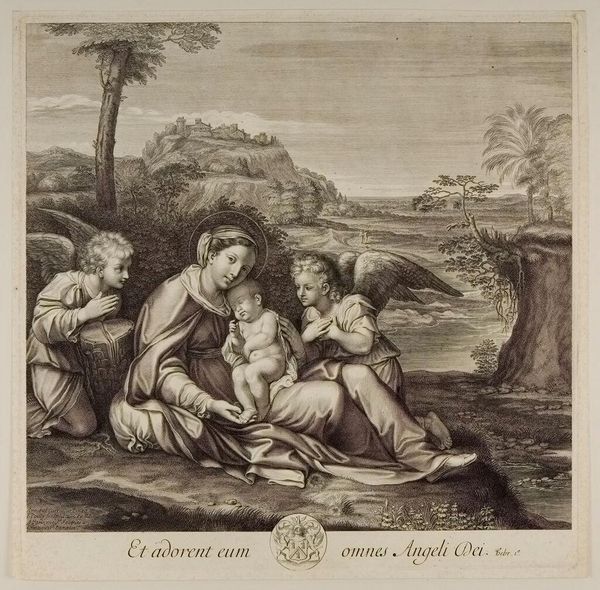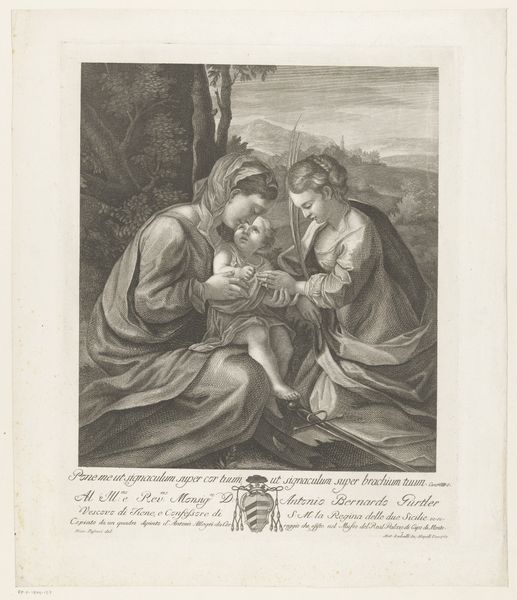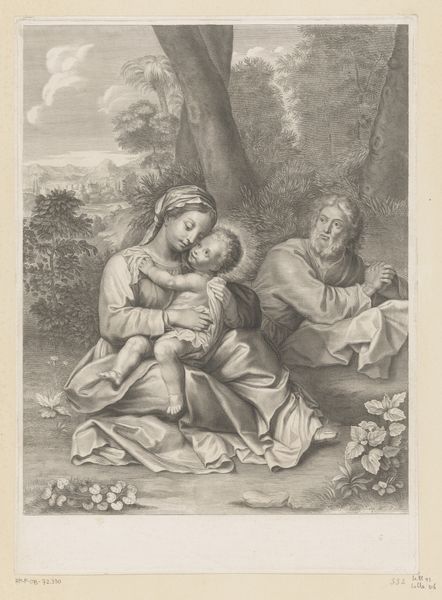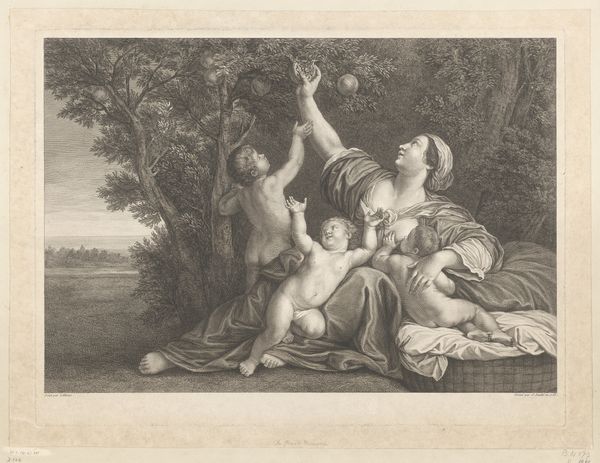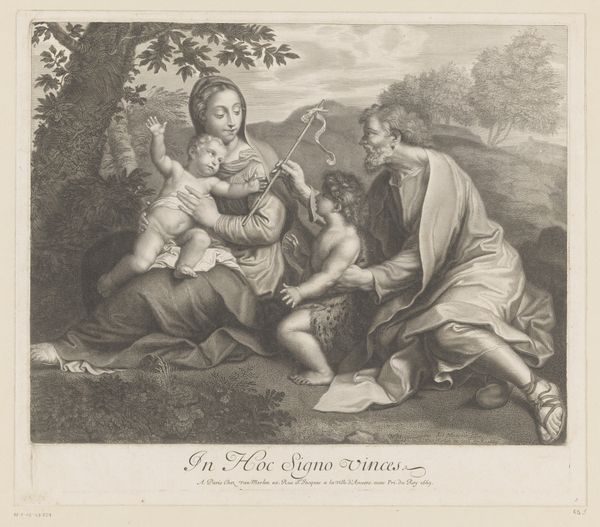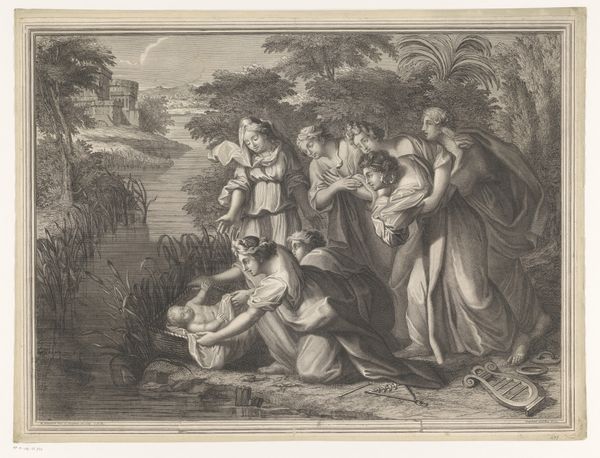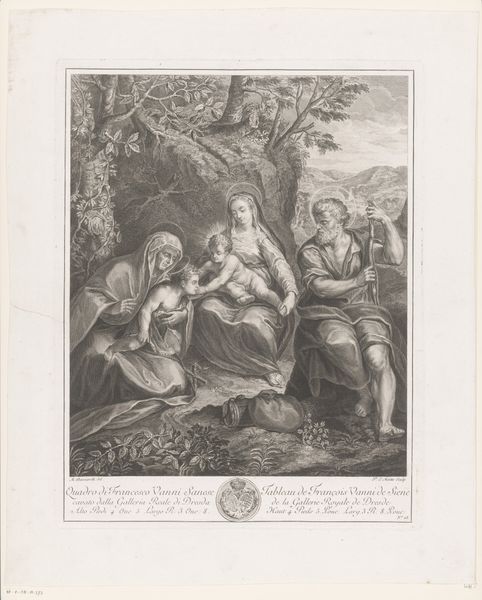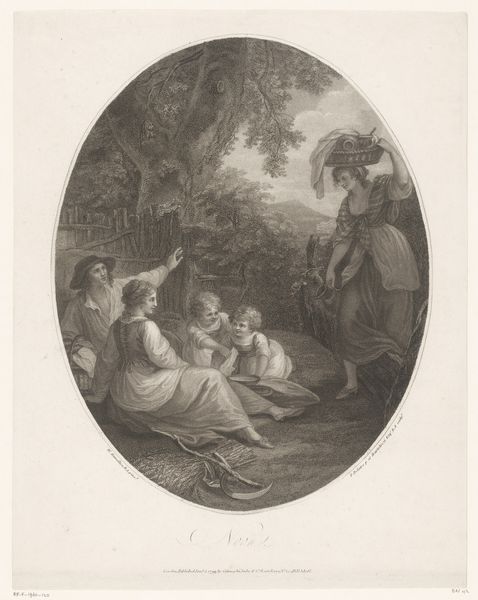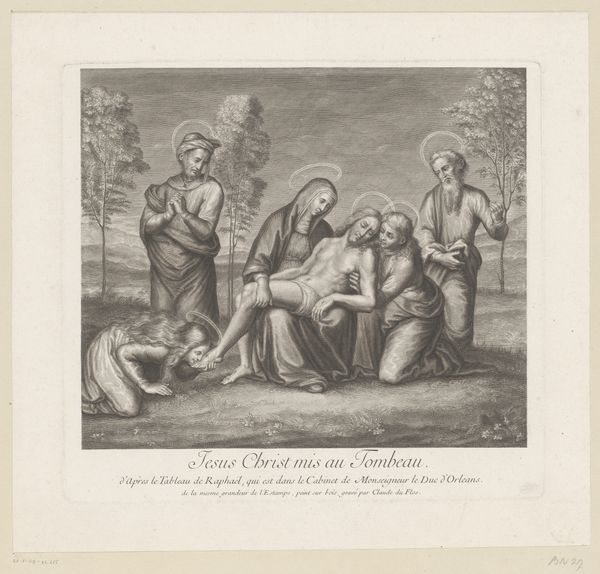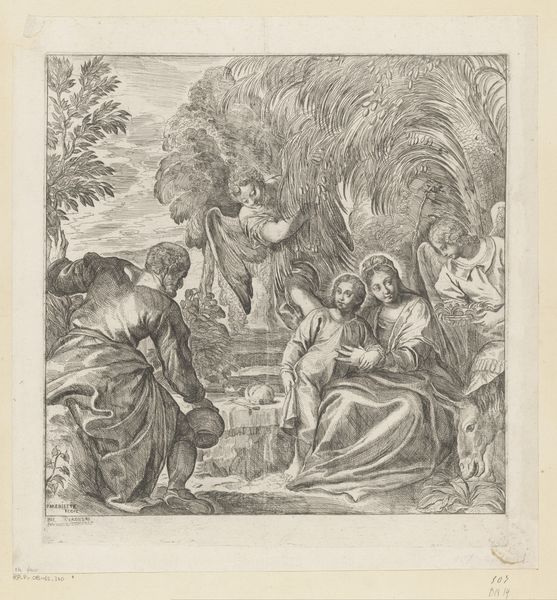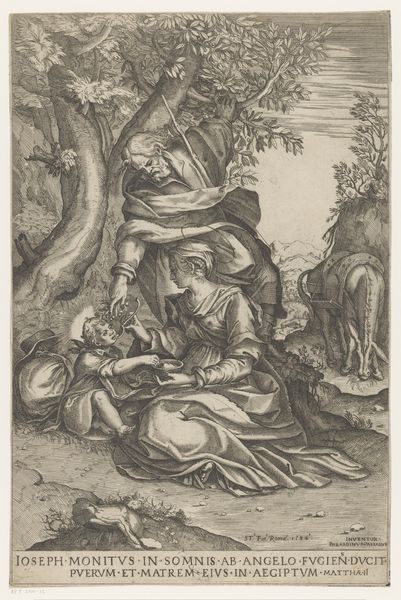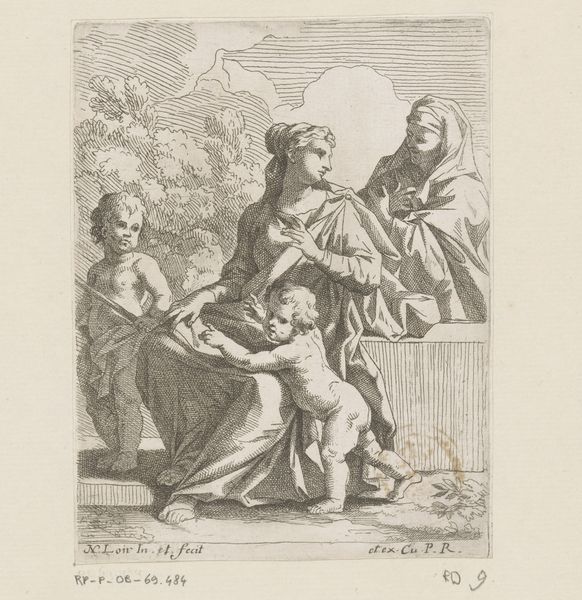
etching, engraving
#
baroque
#
etching
#
landscape
#
figuration
#
engraving
Dimensions: height 370 mm, width 376 mm
Copyright: Rijks Museum: Open Domain
Curator: Let’s discuss this detailed print: "Maria met slapend Christuskind en twee engelen," made sometime between 1632 and 1693 by Francois de Poilly. Editor: It’s lovely, quite serene. The landscape backdrop seems to almost embrace the figures in the foreground, offering a comforting sense of enclosure. Curator: Indeed. De Poilly worked primarily with etching and engraving. Here we see an excellent example of the engraver's art; he creates a range of textures using only lines and dots. The quality of the paper itself must also have been crucial, being both durable and able to show this nuance. Editor: Looking at it from a contemporary lens, I am struck by the social dynamics depicted here: a protective Madonna amidst a natural setting. There's an intriguing tension between maternal care and the surrounding environment that implies the holy family are taking refuge in nature. It invokes ecological awareness; even divinity depends on the Earth’s generosity. Curator: You highlight an interesting point. Consider too that devotional prints such as this one had a vital function within the household; they facilitated domestic worship and piety through readily reproducible means, impacting society far and wide. Editor: Precisely. Further, this image presents a visual articulation of baroque ideals, a time when the church asserted its power visually and culturally amidst social changes and power disputes. The composition encourages reverence but also reminds us about broader historical power relations, questioning art’s function in reinforcing socio-political structures. Curator: Absolutely, and understanding the interplay of printmaking and the accessibility it provides brings us closer to acknowledging its deep-seated influence on disseminating ideas to contemporary audiences. The social context of its distribution is important in appreciating its cultural relevance. Editor: Thank you. This has underscored for me the continuing dialogue art invites, as relevant in discussions of gender, divinity, and socio-ecological responsibilities. Curator: Likewise, focusing on its mode of production reveals just how art shapes cultural norms beyond traditional aesthetics, even influencing societal habits related to value and religious sentiment.
Comments
No comments
Be the first to comment and join the conversation on the ultimate creative platform.
